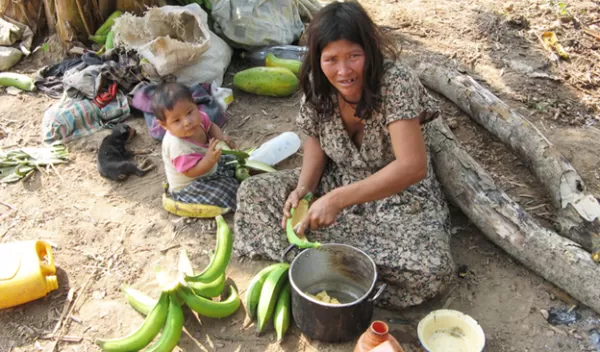
For clues to healthy brain aging, look to the Bolivian Amazon
Some of the lowest rates of heart and brain disease ever reported by science are found among Indigenous communities inhabiting the tropical forests of lowland Bolivia. New University of Southern California research on two of these societies, the Tsimané and Mosetén, suggests that there are optimal levels of food consumption and exercise that maximize healthy brain aging and reduce the risk of disease.
The study, supported in part by the U.S. National Science Foundation, appears in Proceedings of the National Academy of Sciences.
Thanks to industrialization, humans now enjoy greater access to food, less physical toil and better access to health care than ever before. However, we've grown accustomed to eating more and exercising less. Obesity and sedentary lifestyles are associated with smaller brain volumes and faster cognitive decline.
To better understand the tipping point where abundance and ease begin to undermine health, the researchers enrolled 1,165 Tsimané and Mosetén adults, aged 40-94 years, and provided transportation for participants from their remote villages to the closest hospital with CT scanning equipment.
The team used CT scans to measure brain volume by age. They also measured participants' body mass index, blood pressure, total cholesterol and other markers of energy and overall health.
Researchers found that the Tsimané and Mosetén experience less brain atrophy and improved cardiovascular health compared to industrialized populations in the U.S. and Europe. Rates of age-related brain atrophy, or brain shrinking, are correlated with risks of degenerative diseases like dementia and Alzheimer's.
"The lives of our pre-industrial ancestors were punctured by limited food availability," said Andrei Irimia, a gerontologist at USC and co-corresponding author of the study. "Humans historically spent a lot of time exercising out of necessity to find food, and their brain aging profiles reflected this lifestyle."
The findings also illustrated key differences between the two Indigenous societies. The Mosetén are a "sister" population to the Tsimané in that they share similar languages, ancestral history and a subsistence lifestyle. However, the Mosetén have more exposure to modern technology, medicine, infrastructure and education. Irimia said that the Mosetén showed better health than modern populations in Europe and North America — but not as good as that of the Tsimané.
